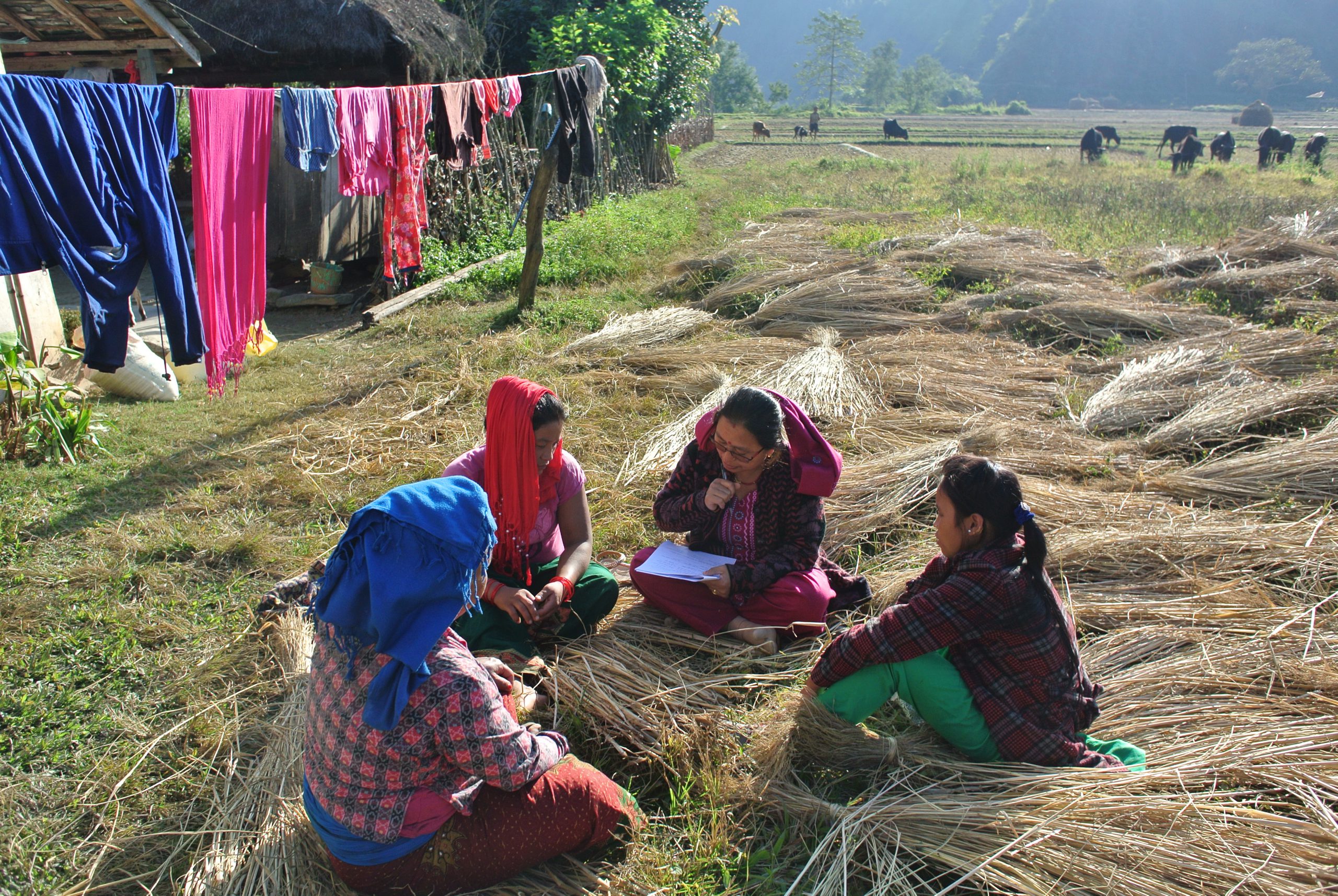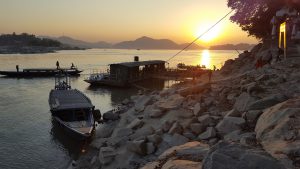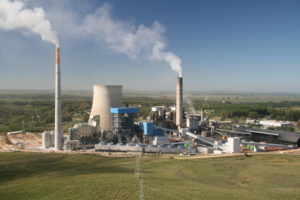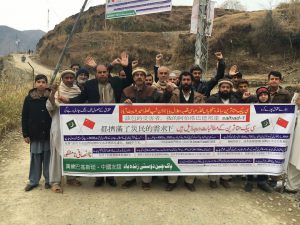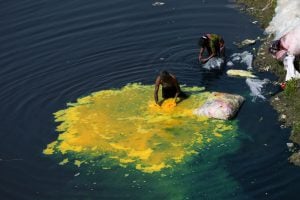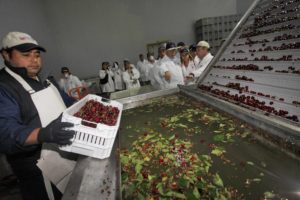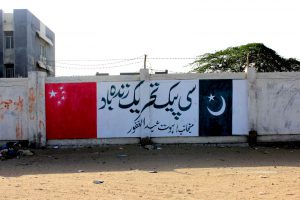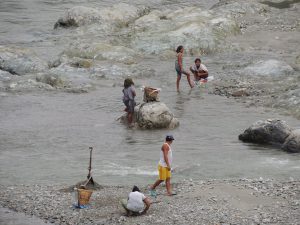We walk along unpaved and dusty roads. Women cut rice crops in paddy fields while men, wearing traditional Nepali “topis”, smash stalks against threshing rocks. Water buffaloes graze in the fields. Along the main road, children in uniforms walk home from school. They cross a suspension bridge and make their way uphill and out of sight.
The suspension bridge hangs across a clear and rapidly-flowing river. As I approach the bridge, my heart starts pounding and I cannot bring myself to look down. I walk away and sit on the grass nearby, next to an elderly man who gazes into the river. “I helped build this bridge,” he says. “It was the only way people living across the river could go to town and kids could go to school. If this dam is built, the bridge, all these houses — everything — will be underwater.”
The man is talking about the Tanahu Hydropower Project, that stands to threaten the homes, livelihoods and resources of communities in Damauli, Tanahu. I was visiting the area to learn more about the proposed dam and understand what communities thought about the project.
The Tanahu Hydropower Project involves the construction of a 140 megawatt power plant with water storage facilities and a transmission system. The project is estimated to cost around USD 550 million and be completed by 2020. The Asian Development Bank (ADB), the European Investment Bank (EIB) and the Japan International Cooperation Agency (JICA) are providing funds for the project.
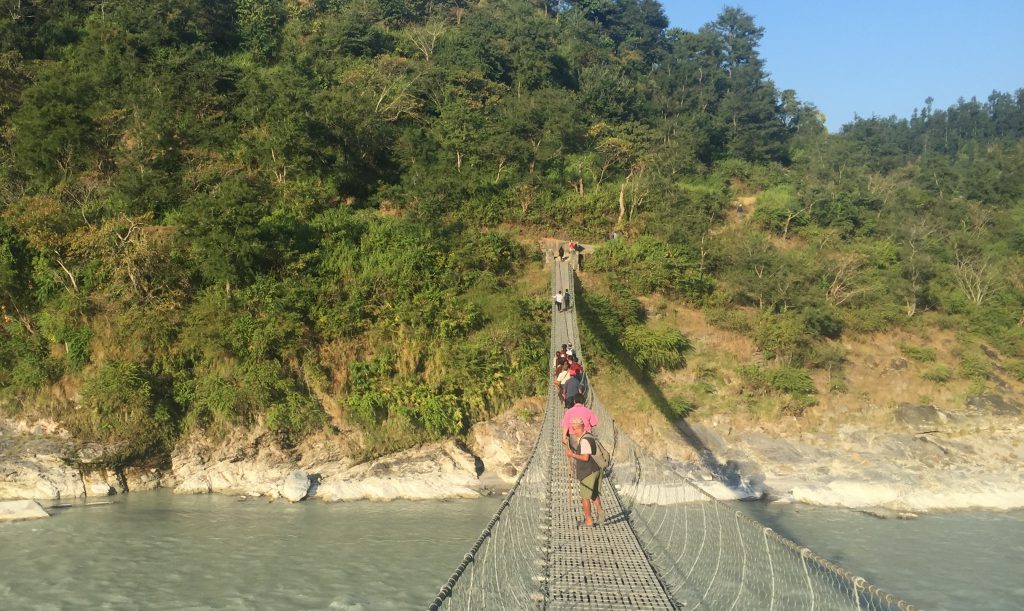
The dam is needed to expand access to clean and sustainable energy, according to the ADB, and that the investment will enhance trade, productivity, job creation and the quality of life of citizens, as well as bring “community development” to a rural area. This narrative sounds positive on paper but I quickly learned that the people directly impacted by the project have a different story to share.
According to local residents in Tanahu, more than 750 households will be affected by the hydropower project. Community members belong to different indigenous groups, such as Magar, Gurung, Newar. They depend on the land for their livelihoods and they are concerned about the impacts to their traditional lands and environment. For indigenous communities, meaningful participation in consultation and decision making is a key prerequisite to any development project. This has not been the case for Tanahu. As one resident noted: “We don’t have any information about who exactly is funding this project. There was no public hearing.”
To address this gap in access to information, the Community Empowerment, Social Justice Foundation (CEMSOJ) and the Indigenous Women Legal Awareness Group (INWOLAG), with support from Asia Indigenous Peoples Pact (AIPP), the Accountability Counsel and the International Accountability Project, organised a training workshop in November last year to share information about the project and understand the situation of affected communities.
As a group, we were committed to supporting communities in their efforts to engage with banks, government and the company about their needs. During the training, community members learned about relevant national laws from a senior indigenous rights lawyer. They also heard from AIPP representatives about international legal frameworks to defend indigenous peoples’ rights, and relevant ADB policies. I shared a presentation about communities in Thailand and Mekong countries who’d responded to ADB-financed projects in the past, as well as examples and strategies from community-led research in Malawi in response to a similar dam project.
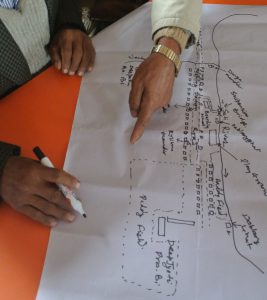
In one activity, I invited community representatives to draw a map of their villages and consider what would be important for the preservation of their livelihoods and culture. They were then asked to prepare questions to ask an ADB representative, as if they would meet one in the next hour. Each group of participants came up with a long list of questions. Most asked about the lack of information available about the project and how their losses would be compensated. We then asked a community member to volunteer to act as the ADB representative, and each group had one chance to meet them and ask questions. Even in a role-playing setting, residents were nervous. Some groups used their community maps as evidence to present their questions. At the end of the activity, residents reflected on what they took away from the exercise. They concluded that communities themselves should research and prepare information about how their rights would be affected by the project.
Drawing from this activity, residents agreed to set up a community-led research group, with support from the INWOLAG and IAP. Together we drafted a questionnaire, adapted from the one prepared by communities in Malawi. The questionnaire asked participants to share their knowledge and recommendations about how the project was disclosed and discussed with affected communities.
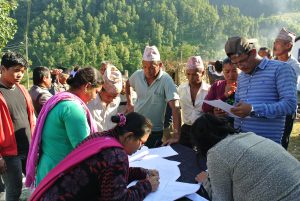
We then reviewed the survey questions and community representatives began interviewing each other. After the first round of interviews, we reviewed responses and reflected on the experience. One researcher, quoting the responses of one of his interviewees, noted: “Nobody ever asked us questions like this before.” Researchers are now in the process of collecting 150 surveys, travelling to villages and remote areas only accessible by foot. In the next phase, IAP will support community members to analyse the data collected.
While conducting the community-led research, the affected communities in Tanahu have also been actively engaging with the national government and private companies. In December, a memorandum was submitted to the Minister of Energy in Nepal raising concerns about the project. Communities have demanded copies of project documents, meaningful consultations with a policy of informed consent and inclusion in relevant committees making decisions about the project. They have also travelled to Kathmandu to submit their memorandum to the Tanahu Hydropower company and the National Human Rights Commission. The government and the company have promised to respond to their demands. Communities are also contesting the government’s decisions on the scale and scope of compensation. In February, around 350 villagers rallied and assembled in front of Tanahu District Office asking the government to follow the ADB safeguards policy. More recently, Tanahu Hydropower Limited has responded with a letter to affected communities to form a local consultation forum. Residents are planning further mobilisations as they continue to push for their demands to be heard.
It has been several months since my visit to Tanahu but I keep remembering the bridge and the fear I had trying to cross it. Flooding the bridge, and all that lies around it, would only affirm the fundamental disconnection between local people and the financiers of the project.
Tom Weerachat is the programme coordinator of the International Accountability Project, and is based in Chiang Mai.
This blog first appeared on Medium, and has been republished with permission.
